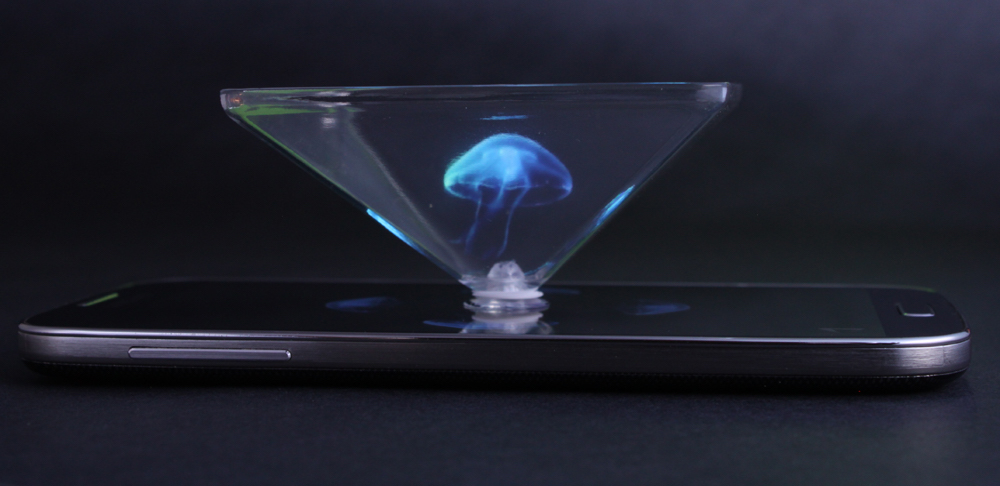
Ta-Da: Magician's Trick Brings 3D Images to Your Phone

Even your smartphone can make 3D images, without adding expensive laser holography systems — at least if an Arizona inventor has his way.
Hologram Pyramid was dreamed up by Jim Smith, a Phoenix resident and engineer who has worked in industrial and product design for the past 15 years. It's an attachment to an iPhone that creates the illusion of 3D images floating above the screen — imagine holding a phone parallel to the ground and seeing Princess Leia standing on it, telling Obi-Wan Kenobi he's her only hope.
Smith based his design on a phenomenon called Pepper's ghost, which is the same technology that brought the world lifelike images of the late Tupac Shakur on stage at the Coachella Valley Music and Arts Festival in 2012. [Tech for Tots: The Coolest Products for Kids at CES 2016]
When Smith used the technology to float 3D images of letters above his phone, his 3-year-old son was fascinated, Smith said. That, he said, suggests the technology could help in making educational videos, or even games.
The device itself is a truncated, square, pyramid-shaped piece of clear plastic, with a suction cup at the bottom. The suction cup holds the pyramid's small end to a phone, so that the clear faces of the pyramid spread out at an angle to the screen. To get the effect you need to play a video with four images, with each image on the smartphone screen underneath one face of the pyramid. The phone is held horizontally.
Videos are available on YouTube (there's a whole page of them made by enthusiasts) and apps to split an ordinary video into four images, two of which are "mirrored" to give the illusion of looking at an object from the other side.
Smith told Live Science he got the idea from a Reddit discussion, and later looked up do-it-yourself versions online. There were even some attempts to sell this type of product on Kickstarter. "There have been at least two of those pyramid projects on Kickstarter," he said. "They didn't look like they were made of one piece of plastic." That was how he decided to make his technology different: The pyramid would be constructed out of a single piece of plastic, not four pieces stuck together.
Sign up for the Live Science daily newsletter now
Get the world’s most fascinating discoveries delivered straight to your inbox.
Smith's first attempt to build one involved taking a CD case and simply cutting it into pieces, and taping them together. The pyramids he plans to manufacture would be made of a similar material.
The 3D illusion happens when you look at any side of the pyramid. The plastic is both reflective and transparent, so when the video from the phone is projected on the side of the pyramid, the viewer sees the image "inside" the pyramid. If each of the four images on the phone presents a different aspect of the same object, then turning the pyramid creates the illusion of a 3D object rotating.
This isn't a true hologram, which operates on a much different principle. A hologram is made with two laser beams, one to illuminate the object, reflecting light onto a recording surface, and the other to illuminate the recording surface. After that, if you illuminate the surface with the original beam, you get a 3D image.
Smith said there were still challenges. "I scoured the Earth to find a suction cup that wouldn't interfere with the image," he said. It turned out this was one of the tougher items to track down, though he finally found one about the size of a nickel that worked.
Smith's Kickstarter page is asking for $12,500, which he has to raise by Jan. 14. That should cover the costs of finding a manufacturer to make the pyramids, he said.
"I always wanted to do my own thing," he said. "There was always some excuse, and this came along," he said.
If he doesn't raise enough money, he said he plans to find other investors to fund the technology.
Follow us@livescience, Facebook & Google+. Original article on Live Science.










